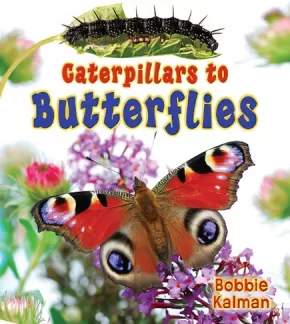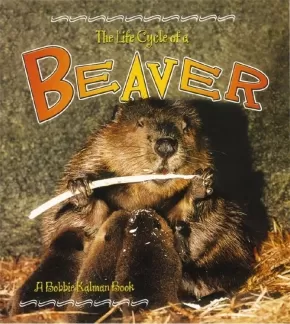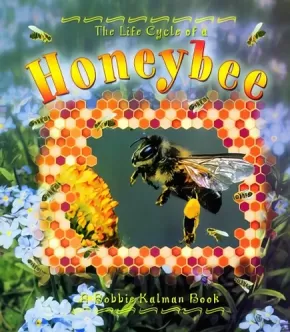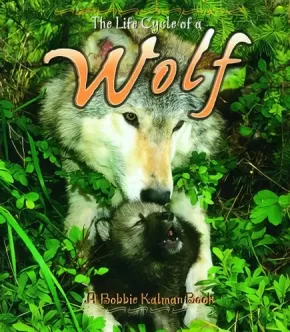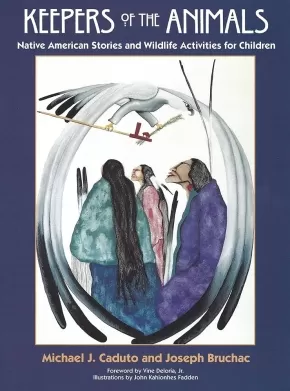
Life Cycles
76
-
85
of
85 Results;
Sort By
Go To
of 6
Caterpillars to Butterflies
$7.95
Format:
Paperback
ISBN / Barcode: 9780778739746
Synopsis:
Synopsis:
Butterflies are the most beautiful insects, and this latest Crabtree title shows these colorful creatures in all their glory! The book starts with the stages of metamorphosis from egg to wormlike caterpillar to pupa, and finally, to a magnificent butterfly. It then introduces some caterpillars and butterflies and asks children to notice their similarities and differences. The book then challenges children to guess which caterpillars would change into which butterflies.
Educator & Series Information
Reading Level: Gr. 1-2
Interest Level: Gr. K-3
Guided Reading Level: J
This book is from the It's Fun to Learn About Baby Animals series. This beautiful series uses adorable pictures of baby animals to introduce basic curriculum concepts, such as animal classification, color and pattern, habitats, animals anatomy, sense, diet, family structures, the role of play, and life cycles. Children will love the pictures of the cute baby animals and will be thrilled to learn about how each animal lives.
Additional Information
24 pages | 8.20" x 9.30"
The Life Cycle of a Beaver
$10.95
Format:
Hardcover
ISBN / Barcode: 9780778707028
Synopsis:
Synopsis:
From newborn to adult and all stages in between, The Life Cycle of a Beaver takes children through the captivating lives of beavers. Clear text and stunning pictures give detailed explanations of where beavers live and how they raise their young. In addition, this book fully explains
• beaver bodies
• beaver family units
• building dams
• dangers to beavers through loss of habitat
Additional Information
32 Pages | 8.5" x 9.5" | Hardcover
The Life Cycle of a Flower (3 in stock, in reprint)
$10.95
Format:
Paperback
ISBN / Barcode: 9780778706977
Synopsis:
Synopsis:
The Life Cycle of a Flower looks at the growth of a flower from seed to the time it is a mature plant capable of producing new seeds. Delightful illustrations, stunning photographs and easy-to-read text help young readers learn:
• how seeds are formed and what different types of seeds look like
• the various ways flowers are pollinated
• the conditions necessary for a seed to germinate and begin to make a new plant
• how flowering plants benefit animals, people, and the environment
The Life Cycle of a Honeybee
$10.95
Format:
Paperback
ISBN / Barcode: 9780778706946
Synopsis:
Synopsis:
These busy insects have intrigued people of all ages for thousands of years. The Life Cycle of a Honeybee describes each stage of a honeybee's life cycle from egg to adult. Full-color photographs, beautiful illustrations, and easy-to-understand text highlight:
• how a queen lays eggs and forms a new hive
• how eggs develop into workers, drones, or queen bees
• how the body of a larva changes to that of an adult through metamorphosis
• the roles of workers, drones, and queens in the hive
• how honeybees find food
The Life Cycle of a Bird
$10.95
Format:
Paperback
ISBN / Barcode: 9780778706847
Synopsis:
Synopsis:
Although there are over 9,000 species of birds in the world, each develops from a single-celled egg, is incubated, hatches, and grows to adulthood. Some bird life cycles involve migration. The Life Cycle of a Bird focuses on the various stages and explains:
• differences in the length of time birds incubate their eggs and care for their young
• the development of a chicken embryo and how a chick hatches
• dangers to nesting habitats, the effects of pollution, and how these affect the life cycle of birds
Additional Information
|
The Life Cycle of a Butterfly (3 in stock, in reprint)
$10.95
Format:
Paperback
ISBN / Barcode: 9780778706809
Synopsis:
Synopsis:
A monarch born in the fall has two major challenges! In addition to metamorphosis, these butterflies fly 4,000 miles on a two-way migration trek! The Life Cycle of a Butterfly explains butterfly metamorphosis and migration in simple terms. The text is beautifully illustrated with photographs and art, making this book a joy to read. Topics include:
• where butterflies lay their eggs
• the "eating machine" caterpillar
• the transformation from pupa to chrysalis to butterfly
• monarch migration
• butterfly facts and activity suggestions
• how to protect butterflies
The Life Cycle of a Frog (9 in Stock)
$9.95
Format:
Paperback
ISBN / Barcode: 9780778706816
Synopsis:
Synopsis:
Frogs begin their lives as tiny tadpoles living in water. As adults, they live both on land and in the water. The Life Cycle of a Frog details the changes in a frog at the four stages: egg, tadpole, froglet, and adult. Illustrations, photographs, and easy-to-read text explain:
• facts about how the frog breathes and eats at each stage
• differences in the metamorphosis of frogs in southern and northern climates
• dangers to frogs from pollution, pesticides, and destruction of habitat
The Life Cycle of a Tree
$10.95
Format:
Paperback
ISBN / Barcode: 9780778706892
Synopsis:
Synopsis:
The Life Cycle of a Tree follows the growth of a tree from the time it sprouts to the time it is mature and capable of producing new seeds. The complex lives of these everyday plants will startle and delight young readers. Stunning photographs and illustrations accompany clear explanations of:
• how seeds are produced
• how different types of seeds look
• the role of various trees in a forest
• how trees benefit animals, people, and the environment
• how children can help trees in their neighborhood and around the world
The Life Cycle of a Wolf
$10.95
Format:
Paperback
ISBN / Barcode: 9780778706878
Synopsis:
Synopsis:
The life cycle of a wolf revolves around the complex family structure of the pack. In The Life Cycle of a Wolf, children will learn about the intricacies of pack life and the ways in which each stage of a wolf pup’s development determines its future in the family group. Photographs and illustrations of these majestic animals illuminate topics such as:
• different types of wolves
• the preparation of a birthing den
• a pup’s introduction to the hunt
• challenges to pack structure
• dangers to wolves in the wild
Keepers of the Animals: Native American Stories and Wildlife Activities for Children
$33.95
Format:
Paperback
Text Content Territories:
Indigenous American; Native American;
ISBN / Barcode: 9781555913861
Synopsis:
Synopsis:
Part of the bestselling "Keepers" series, Keepers of the Animals encourages an early interest in wildlife and the environment through Native stories and legends and extensively tested activities for children aged 5 to 12.
Perfect for classroom and home use, this interdisciplinary book teaches children to appreciate Native cultures and heritage while learning about North American animals, insects, fish, reptiles, and birds.
From the Introduction: Keepers of the Animals continues the tradition established by its highly popular and critically acclaimed predecessor, Keepers of the Earth. Here each parent, teacher, naturalist and storyteller is given the tools to bring the wonder and magic of the stories and lessons into the lives of children by empowering them with knowledge, skills and enjoyment found in the activities. This book is about learning to understand, live with and care for the animals: A gathering of carefully selected Native North American animal stories and hands-on activities that promote an understanding of, appreciation for, empathy with and responsible stewardship toward all animals on Earth, including human beings.
Educator & Series Information
B.C. Science Supplementary Resouce Gr.4- Life Science.
This book is part of the Keepers series.
Foreword by Vine Deloria, Jr.
Additional Information
288 pages | 8.35" x 11.00"
Sort By
Go To
of 6

